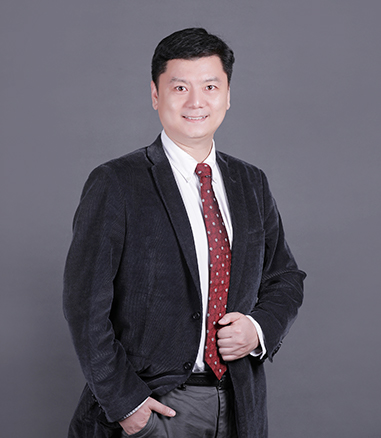

2022–至今, 北京大学,博雅特聘教授、博士生导师
2016–2022, 北京大学,特聘研究员、博士生导师
2009–2016, 美国西北大学,博士后研究员
2004–2009, 美国哥伦比亚大学, 博士
2003–2004, 美国哥伦比亚大学,硕士
1998–2003, 中国科学技术大学,本科
低维(一维、二维)材料力学
抗冲击复合材料与结构力学
金属塑性、疲劳、损伤与断裂力学
2023年 获国家自然科学基金委杰出青年科学基金资助
2022年 入选北京市优秀研究生指导教师团队
2021年 中国力学学会青年科技奖(第十七届)
2021年 邓稼先青年科技奖提名奖(第十七届)
2020年 黄廷芳-信和青年杰出学者奖
2019年 北京大学教学优秀奖
2019年 北京大学正大教师奖
2015年 入选海外高层次人才引进计划青年项目
2024/12 – 至今 中国复合材料学会副秘书长
2021/02 – 至今 ASME Journal of Engineering Materials and Technology副主编
2020/10 – 至今 Acta Mechanica Sinica和《力学进展》期刊青年编
(1)突破传统实验手段在样品尺寸和测量精度方面的限制,首次实验测定了石墨烯的理论强度,发展了具有第一性原理计算精度的二维材料非线性本构关系。
(2)给出若干仿生层级结构材料经典断裂问题的解析解,实现了该类材料断裂力学性能的定量预测,为突破“强度-韧性”矛盾的先进材料设计提供了理论依据。
(3)发展了层级结构材料的动态吸能理论,建立了动态载荷下材料的“组分-结构-性能”关联。研究成果多次被New York Post, Materials Today, NewScientist, ScienceDaily和Physics News等多家报纸、网站等媒体报道。所发表文章他引次数超3万次(Google Scholar数据)。
代表性论文:
1. Dou, L. et al. Flexible high-entropy functional ceramics. Nature Communications 16, 5915 (2025).
2. Zhu, W., Li, Z., Shu, H., Gao, H. & Wei, X. Amorphous alloys surpass E/10 strength limit at extreme strain rates. Nature Communications 15, 1717 (2024).
3. Zheng, L. et al. Uniform thin ice on ultraflat graphene for high-resolution cryo-EM. Nature Methods 20, 123-130 (2023). https://doi.org/10.1038/s41592-022-01693-y
4. Li, L. et al. Large-scale assembly of isotropic nanofiber aerogels based on columnar-equiaxed crystal transition. Nature Communications 14, 5410 (2023).
5. Zhu, W., Mao, S. & Wei, X. Finite deformation continuum model for mechanically induced phase transition in transition metal dichalcogenide monolayers. Journal of the Mechanics and Physics of Solids, 104955 (2022).
6. Ming, K. et al. Enhancing strength and ductility via crystalline-amorphous nanoarchitectures in TiZr-based alloys. Science advances 8, eabm2884 (2022).
7. Li, L. et al. Nanograin–glass dual-phasic, elasto-flexible, fatigue-tolerant, and heat-insulating ceramic sponges at large scales. Materials Today 54, 72-82 (2022).
8. Zhu, W., Liu, J. & Wei, X. A multiscale model for the prediction of ballistic performance of fiber-reinforced composites. International Journal of Impact Engineering 154, 103889 (2021).
9. Zhu, W., Liu, J., Mao, S. & Wei, X. A new continuum model for viscoplasticity in metallic glasses based on thermodynamics and its application to creep tests. Journal of the Mechanics and Physics of Solids 146, 104216 (2021).
10. Song, J., Zhu, W. & Wei, X. Correlations between the hierarchical spatial heterogeneity and the mechanical properties of metallic glasses. International Journal of Mechanical Sciences 204, 106570 (2021).
11. Liu, J. & Wei, X. A universal fracture analysis framework for staggered composites composed of tablets with different wavy topologies. Journal of the Mechanics and Physics of Solids 151, 104387 (2021).
12. Zheng, L. et al. Robust ultraclean atomically thin membranes for atomic-resolution electron microscopy. Nature Communications 11, 1-8 (2020).
13. Yu, Z., Liu, J. & Wei, X. Achieving outstanding damping performance through bio-inspired sutural tessellations. Journal of the Mechanics and Physics of Solids, 104010 (2020).
14. Liu, J., Yu, Z. & Wei, X. A multiscale analytical framework for mode I crack in staggered composites. Journal of the Mechanics and Physics of Solids 145, 104157 (2020).
15. Jia, C. et al. Highly compressible and anisotropic lamellar ceramic sponges with superior thermal insulation and acoustic absorption performances. Nature Communications 11, 1-13 (2020).
16. Wei, L., Zhu, W., Yu, Z., Liu, J. & Wei, X. A new three-dimensional progressive damage model for fiber-reinforced polymer laminates and its applications to large open-hole panels. Composites Science and Technology 182, 107757 (2019).
17. Yu, Z., Liu, J. & Wei, X. Unraveling crack stability and strain localization in staggered composites by fracture analysis on the shear-lag model. Composites Science and Technology 156, 262-268 (2018).
18. Yang, C. et al. Kirigami‐Inspired Deformable 3D Structures Conformable to Curved Biological Surface. Advanced Science 5, 1801070 (2018).
19. Liu, J., Zhu, W., Yu, Z. & Wei, X. Dynamic shear-lag model for understanding the role of matrix in energy dissipation in fiber-reinforced composites. Acta Biomaterialia 74, 270-279 (2018).
20. Liu, J., Zhu, W., Yu, Z. & Wei, X. Size effects in layered composites–Defect tolerance and strength optimization. Composites Science and Technology 165, 154-160 (2018).
21. Wei, X. et al. Recoverable Slippage Mechanism in Multilayer Graphene Leads to Repeatable Energy Dissipation. ACS nano 10, 1820-1828 (2016).
22. Wei, X. et al. Plasticity and ductility in graphene oxide through a mechanochemically induced damage tolerance mechanism. Nature communications 6, 1-9 (2015).
23. Wei, X., Ford, M., Soler-Crespo, R. A. & Espinosa, H. D. A new Monte Carlo model for predicting the mechanical properties of fiber yarns. Journal of the Mechanics and Physics of Solids 84, 325-335 (2015).
24. Wei, X., Filleter, T. & Espinosa, H. D. Statistical shear lag model–Unraveling the size effect in hierarchical composites. Acta biomaterialia 18, 206-212 (2015).
25. Wei, X. et al. Three-Dimensional Numerical Modeling of Composite Panels Subjected to Underwater Blast. Journal of the Mechanics and Physics of Solids (2013).
26. Wei, X., de Vaucorbeil, A., Tran, P. & Espinosa, H. D. A new Rate-dependent Unidirectional Composite Model-Application to Panels Subjected to Underwater Blast. Journal of the Mechanics and Physics of Solids (2013).



